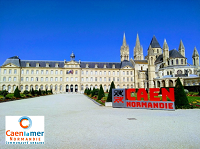Orateur
Description
Light nuclear clusters are expected to be ubiquitously present in astrophysical environments and play an important role in different astrophysical phenomena involving ultra-dense baryonic matter, but the estimation of their abundancy demands to correctly estimate the in-medium modification of their binding energy.
In the original measurements, Equilibrium Constants were extracted detecting clusters emitted by a hot expanding source identified in the mid-rapidity region in central heavy-ion collisions. The measured Equilibrium Constants for 2H, 3H, 3He, 4He and 6He were compared to a relativistic mean-field model, and seen to be reasonably compatible with a universal correction of the attractive σ-meson coupling.
Recently the data/model confrontation was analysed again by using a Bayesian analysis in order to reproduce the isotope mass fractions. This new analysis will be presented.
From the experimental point of view, different entrance channels, reaction mechanisms and incident energies have to be explored to validate the results and heavier clusters (Z>2) should also be considered to challenge the theoretical hypothesis of universal couplings. This is why a new experiment has been carried out in order to analyse vaporization-like events of heavy ion reactions measured at GANIL using the INDRA-FAZIA multi-detector. We propose to present these new results within the Bayesian approach that has already been settled.

